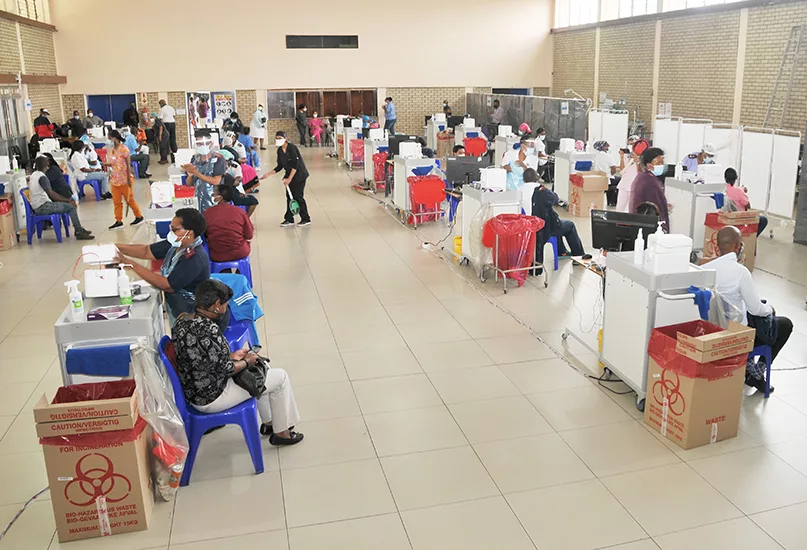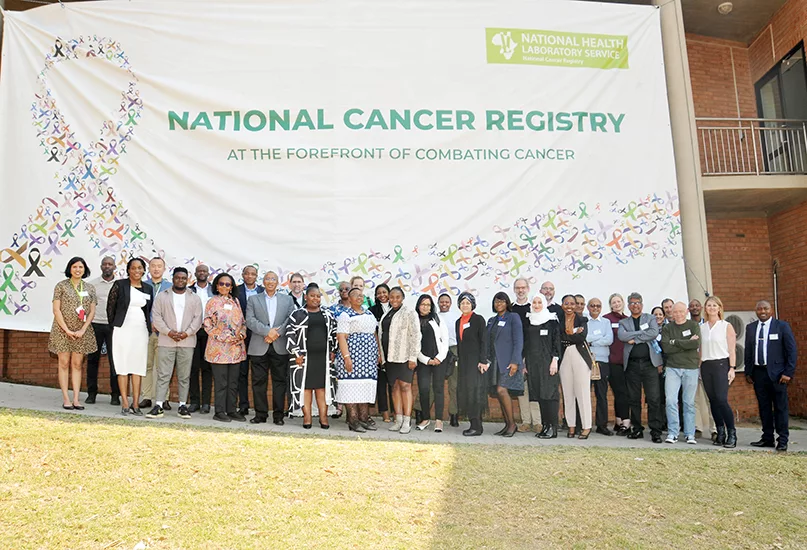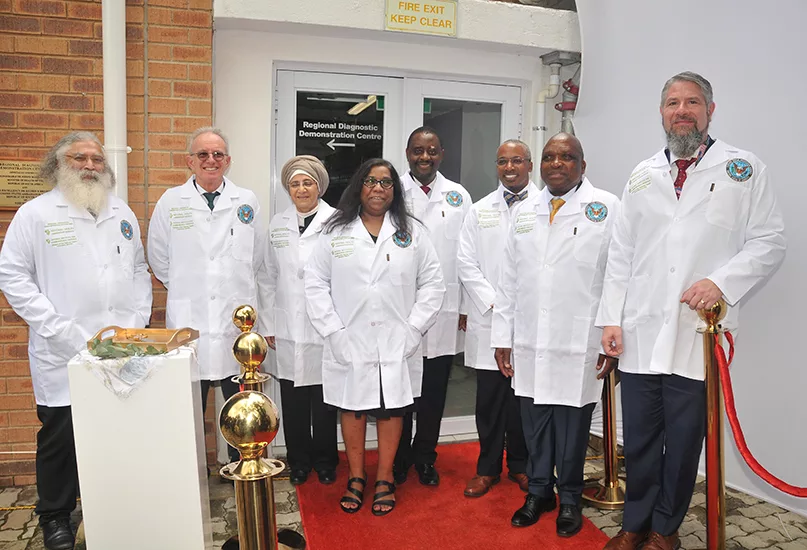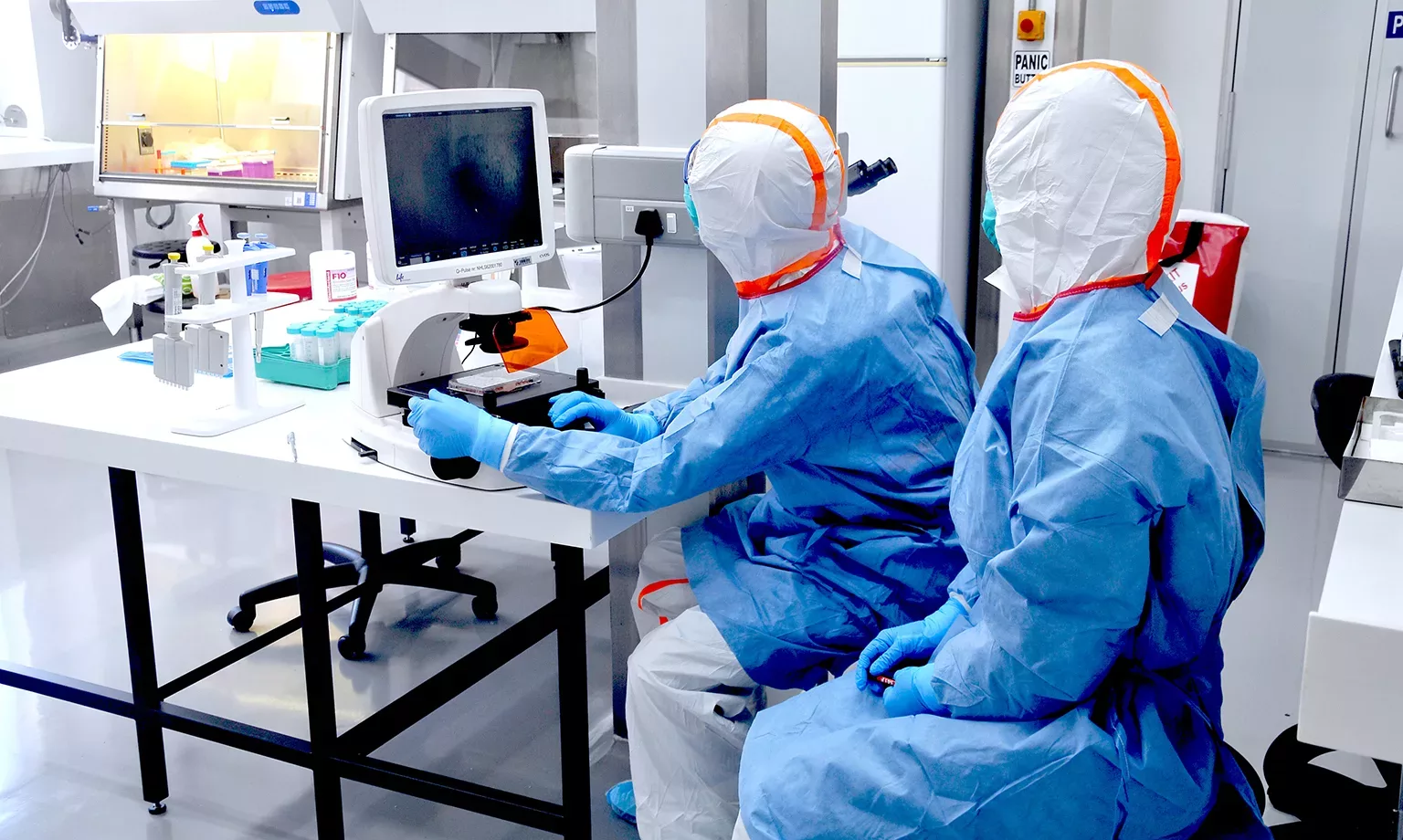Dedicated to surveillance and research, the National Institute for Communicable Diseases has an essential role in preventing outbreaks/epidemics. Executive Director Adrian Puren explains how it responds to outbreaks.
CARING FOR THE SOUTH AFRICAN COMMUNITY
Serving as a resource of knowledge and expertise on infectious diseases to the South African government, the National Institute for Communicable Diseases (NICD), a division of the National Health Laboratory Service (NHLS), is a national health institute serving healthcare workers, policymakers, and the general public by providing science-based, up-to-date information and articles.
“NICD/NHLS serves as the national arm of the National Department of Health in terms of communicable diseases surveillance, which is its main focus,” introduces Adrian Puren, Executive Director of NICD.
With a long history of detecting and preventing infectious diseases, the Poliomyelitis Research Foundation was established to develop a vaccine in response to the global polio outbreak in the 1940s and 1950s.
However, the foundation was quickly superseded regarding research and vaccine developments. After being taken over by the National Department of Health, it was changed to the National Institute for Virology, and from then onwards, it was developed as part of a more cohesive strategy for laboratory services called NHLS, a network of around 230 laboratories of which NICD is a division.
“There will be further evolution, just like what happened with Public Health England, which is now the UK Health Security Agency. Primarily a laboratory-focused surveillance institution, there is now a strong epidemiological focus on communicable diseases, although one of its biggest strengths is its laboratories,” Puren reveals.
The core of NICD is centred around scientists, medical technologists, and epidemiologists. Additionally, epidemiology provides a rounded approach similar to how a public health institute responds to communicable diseases.
“We have the largest number of epidemiologists in the country in a single focal space. That’s what gives us a unique blend of being able to respond from a laboratory perspective and perform epidemiological analysis. This is alongside having just under 500 staff supporting the institute and addressing all the challenges we regularly face,” Puren informs us.

VIGILANT ABOUT VIRUSES
Being forever aware and watchful is a significant part of NICD’s operations. Alongside examining emergency outbreak responses, its overall communicable disease surveillance includes the Notifiable Medical Conditions (NMCs) arm.
“NMCs are the diseases we keep under surveillance, especially because if there are larger or more severe outbreaks, it is critical that we know what is in circulation so we can respond accordingly. The International Health Regulations (IHR) also have notifiable specific diseases,” Puren outlines.
Early detection is imperative as the broader South African population can be informed and take the necessary precautions. Furthermore, the World Health Organisation (WHO) must be notified about specific outbreaks.
“We have different disease-specific centres, diverging into HIV or tuberculosis, for example. Our Centre for Respiratory Diseases and Meningitis would have been intimately involved with the COVID-19 pandemic; it was critical in setting up diagnostics because we diagnosed the first case in South Africa (SA).” The Outbreak Response and Emergency Operations at NICD play a leading role in responding to outbreaks with the various NICD centres.
Indeed, during the pandemic, NICD expanded beyond diagnostics by collecting data through its data centre and providing technical support to the National Department of Health, the medical profession, and the public, as well as technical support to other regional and international laboratories.
“HIV surveillance and antimicrobial resistance is a vital part of our activities. It is a mixture of implementation science, blue skies research, and surveillance at the institution’s core.”
Although NICD has the capacity for disease surveillance, training, outbreak response, research, proficiency testing schemes, and diagnostic services, it practices prevention interventions such as HIV vaccine programmes and developing diagnostic reagents.
There is a growing emphasis on the importance of laboratory-based surveillance in all countries due to the potential rapid transmission of emerging infections, and NICD is continuously analysing and interpreting data collected from laboratories and research and providing feedback to all relevant parties.

PANDEMIC PREPAREDNESS
Preparedness during the COVID-19 pandemic, and laboratory preparedness in particular, was integral to NICD’s approach to the outbreak.
Moreover, it ensured that its diagnostic capabilities were ready and available so its approach could be expanded further.
“It was essential to develop guidelines for the public, outlining the correct responses. Of course, those changed over time, but so did clinical responses. That was a key role for NICD from a data perspective. We were critical in collating all the data from the laboratory networks where testing was done, including the private sector,” Puren details.
NICD played an important role in reporting events. SA has a strong and well-developed private sector, whose data informed NICD about what was happening around the COVID-19 pandemic. Subsequently, discussions around vaccines became available, and NICD knew which approach to adopt.
“There were areas of controversy and debate over how to move forward given the limitations surrounding access to vaccines, who receives them, and the costs around that.”
Various committees, such as National Incident Management Teams (IMTs), were set up to respond to events and implement key modelling programmes around the trajectory of the various “waves”.
“We had a range of activities, from basic diagnostics to more advanced and complex areas such as policy decisions,” he notes.
The COVID-19 pandemic highlighted specific challenges for NICD, so there is now an impetus to develop vaccines and reagents within the country. Internal development would certainly mitigate SA’s increasing vulnerability regarding sourcing materials.
“As famously quoted by Louis Pasteur, “chance favours the prepared mind”, but the COVID-19 pandemic caught us out. We were busy preparing for the flu, and then this blindsided us. Being sensitive and aware of what is happening in one’s environment using data is underestimated.
“To gain a level of preparedness, we need to be agile around diagnostics, rapidly scale up and respond to it, and utilise data. We learned many lessons from the COVID-19 pandemic in terms of integrating and reporting data,” Puren acknowledges.

RESEARCH, REPORT, AND RESPOND
One of the major projects NICD is undertaking is integrated disease reporting. Through a laboratory network in NHLS, the disease surveillance warehouse is critical in looking at emerging cases.
“There are notifiable medical conditions where patterns may change, so the warehouse is a powerful tool which enables us to respond appropriately. Suppose there is a measles or cholera outbreak, as there was recently – in this case, the laboratory network is critical for us to keep tabs on the outbreak, and of course, work with our counterparts internationally through Africa CDC,” explains Puren.
Establishing weekly reporting that scans the horizon means NICD can be alerted to what is happening. For example, a report of increases in legionella cases can determine the implications; similarly, the Nipah virus in India could have repercussions for the population of SA.
“We keep track of events using an integrated disease tool; we upload our data and start horizon scanning. The data warehouse is a good example of setting a baseline because some diseases are endemic. They can be severe, but they may be in circulation constantly,” he states.
An important investment for NICD is a sequencing core facility. Next-generation sequencing has played an important role in identifying variants of concern, as proven during the COVID-19 pandemic because it shows what is in circulation and the implications of new variants.
“Next-generation sequencing has taken off, and the COVID-19 pandemic has been an example of utilising those data types. Analysing and uploading the data so it becomes part of the broader scientific community and the general population is all about knowing what is in circulation,” Puren elaborates.
As the world has seen with mpox, future outbreaks and infectious agents will be subjected to those types of analysis. Although it was a more stable virus, it was still important to show its origins. Additionally, great strides have been made in ensuring that NICD has kept up with different types of technology and equipment.
“Across the different centres of the institution, technology is an important area regarding surveillance types. Wastewater surveillance has become essential, especially for polio. If the design is appropriate, we can triangulate what we see in wastewater with our clinical data to show whether the data is in sync with early alerts, which the wastewater is supposed to show,” Puren concludes.
Indeed, systems and investments are crucial alongside development and rigid approaches for the prevention of and response to communicable disease outbreaks and epidemics. NICD prides itself on having the only Biosafety Level 4 containment facility in Africa. The return on investment from such a facility for SA and the African continent is tangible.
































